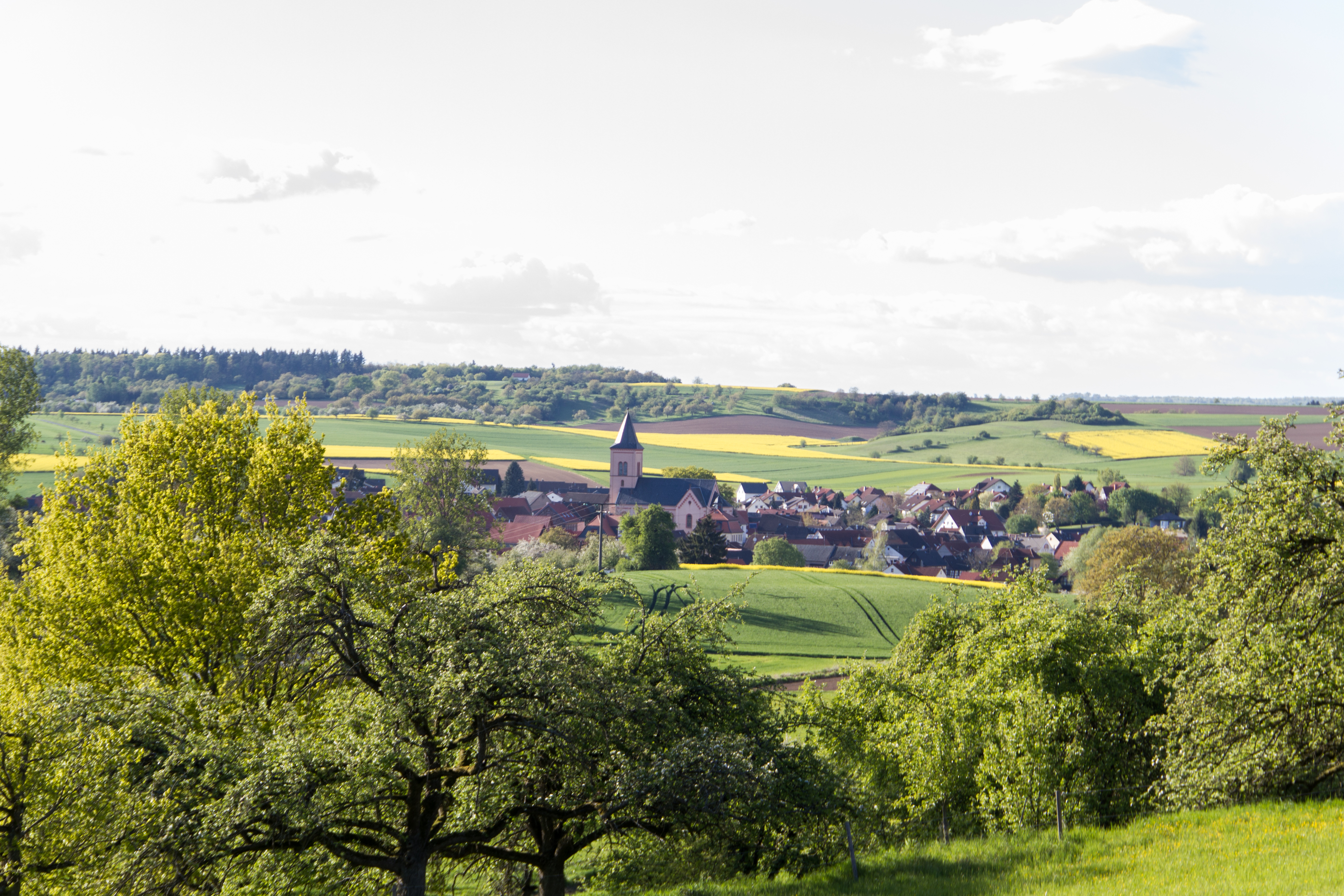|
Büdingen
Büdingen is a town in the Wetteraukreis, in Hesse, Germany. It is mainly known for its well-preserved, heavily fortified medieval town wall and half-timbered houses. Geography Location Büdingen is in the south of the Wetterau below the Vogelsberg hills at an altitude of approx. 160 meters. The city is situated 15 km northwest of Gelnhausen and about 40 km east from Frankfurt am Main. Historically, the city belongs to Oberhessen. Geology Büdingen is situated in a wet and swampy valley. The castle and the old town therefore rest on centuries-old oak planks, placed horizontally across vertical beech piles (poles). The water level has to be kept high enough so that no air can reach these foundations. Districts Since 1972, the municipality includes the following formerly independent villages: Aulendiebach, Büches, Büdingen (core or centre), Calbach, Diebach am Haag, Düdelsheim (the largest municipality), Dudenrod, Eckartshausen, Lorbach, Michelau, Orleshausen, Rin ... [...More Info...] [...Related Items...] OR: [Wikipedia] [Google] [Baidu] |
County Of Isenburg
The County of Isenburg was a region of Germany located in southern present-day Hesse, located in territories north and south of Frankfurt. The states of Isenburg emerged from the Niederlahngau (located in the Rhineland-Palatinate), which partitioned in 1137 into Isenburg-Isenburg and Isenburg-Limburg-Covern. These countships were partitioned between themselves many times over the next 700 years. House of Isenburg The House of Isenburg was an old aristocratic family of medieval Germany, named after the castle of Isenburg in Rhineland-Palatinate. Occasionally referred to as the House of Rommersdorf before the 12th century, the house originated in the Hessian comitatus of the Niederlahngau in the 10th century. It partitioned into the lines of Isenburg-Isenburg and Isenburg-Limburg-Covern in 1137, before partitioning again into smaller units, but by 1500 only the lines of Isenburg-Büdingen (in Upper Isenburg) and Lower Isenburg remained. In 1664 the Lower Isenburg branch died ou ... [...More Info...] [...Related Items...] OR: [Wikipedia] [Google] [Baidu] |
Vogelsberg
The is a large volcanic mountain range in the German Central Uplands in the state of Hesse, separated from the Rhön Mountains by the Fulda river valley. Emerging approximately 19 million years ago, the Vogelsberg is Central Europe's largest basalt formation, consisting of a multitude of layers that descend from their peak in ring-shaped terraces to the base. The main peaks of the Vogelsberg are the Taufstein, , and Hoherodskopf, , both now within the High Vogelsberg Nature Park. Location The Vogelsberg lies in the county of Vogelsbergkreis, around 60 kilometres northeast of Frankfurt between the towns of Alsfeld, Fulda, Büdingen and Nidda. To the northeast is the Knüll, to the east the Rhön, to the southeast the Spessart and to the southwest the low-lying Wetterau, which transitions to the South Hessian lowlands of the Rhine-Main region. In the opposite direction, to the northwest, the Vogelsberg transitions into parts of the West Hesse Highlands, whi ... [...More Info...] [...Related Items...] OR: [Wikipedia] [Google] [Baidu] |
Wetteraukreis
The Wetteraukreis is a ''Kreis'' (district) in the middle of Hesse, Germany. Neighbouring districts are Landkreis Gießen, Vogelsbergkreis, Main-Kinzig-Kreis, district-free Stadt Frankfurt, Hochtaunuskreis and Lahn-Dill-Kreis. History The district was created in 1972 when the two districts Friedberg and Büdingen were merged. Geography The district is located between the Taunus mountains and the Vogelsberg volcanic mountain. The main rivers of the district are the Nidda River The Nidda is a right tributary of the river Main in Hesse. It springs from the Vogelsberg on the Taufstein mountain range near the town of Schotten, flows through the Niddastausee dam, and the towns of Nidda, Niddatal, Karben, and Bad Vilbel. ... and the Wetter River. Coat of arms The imperial eagle in the top of the coat of arms was chosen because the Wetterau was imperial possession in the past. The bars in the bottom derive from the lords of Isenburg-Büdingen, who owned most of the area. The w ... [...More Info...] [...Related Items...] OR: [Wikipedia] [Google] [Baidu] |
Wetterau
The Wetterau is a fertile undulating tract, watered by the Wetter, a tributary of the Nidda River, in the western German state of Hesse, between the hilly province Oberhessen and the north-western Taunus mountains. Bettina von Arnim writes of Wetterau in her text ''Diary of a Child'' in the chapter "Journey to the Wetterau". Geography The Wetterau is located north of Frankfurt am Main, on the eastern side of the Taunus and south-west of the Vogelsberg. The main part of the region is taken up by the political region Wetteraukreis. The region got its name form the small creek Wetter, but the region is crossed by several other creeks and rivers--for example, the Nidda, Nidder, Horloff and Usa. History The Wetterau has a long history and is one of the oldest cultural landscapes in Germany. It was always a very fertile region and was populous from as early as the Neolithic Age. Artifacts from successive civilizations that populated the area also exist. Prominent discoverie ... [...More Info...] [...Related Items...] OR: [Wikipedia] [Google] [Baidu] |
Graf
(feminine: ) is a historical title of the German nobility, usually translated as "count". Considered to be intermediate among noble ranks, the title is often treated as equivalent to the British title of "earl" (whose female version is "countess"). The German nobility was gradually divided into high and low nobility. The high nobility included those counts who ruled immediate imperial territories of "princely size and importance" for which they had a seat and vote in the Imperial Diet. Etymology and origin The word derives from gmh, grave, italics=yes, which is usually derived from la, graphio, italics=yes. is in turn thought to come from the Byzantine title , which ultimately derives from the Greek verb () 'to write'. Other explanations have been put forward, however; Jacob and Wilhelm Grimm, while still noting the potential of a Greek derivation, suggested a connection to got, gagrêfts, italics=yes, meaning 'decision, decree'. However, the Grimms preferred a soluti ... [...More Info...] [...Related Items...] OR: [Wikipedia] [Google] [Baidu] |



